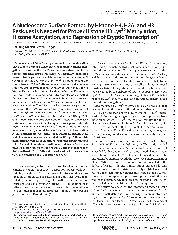摘要
Set2-mediated H3 Lys(36) methylation is a histone modification that has been demonstrated to function in transcriptional elongation by recruiting the Rpd3S histone deacetylase complex to repress intragenic cryptic transcription. Recently, we identified a trans-histone pathway in which the interaction between the N terminus of Set2 and histone H4 Lys(44) is needed to mediate trans-histone H3 Lys(36) di- and trimethylation. In the current study, we demonstrate that mutation of the lysine 44 residue in histone H4 or the Set2 mutant lacking the histone H4 interaction motif leads to intragenic cryptic transcripts, indicating that the Set2 and histone H4 interaction is important to repress intragenic cryptic transcription. We also determine that histone H2A residues (Leu(116) and Leu(117)), which are in close proximity to histone H4 Lys(44), are needed for proper trans-histone H3 Lys(36) methylation. Similar to H4 Lys(44) mutants, histone H2A Leu(116) and Leu(117) mutations exhibited decreased H3 Lys(36) di- and trimethylation, increased histone H4 acetylation, increased resistance to 6-azauracil, and cryptic transcription. Interestingly, the combined histone H4 Lys(44) and H2A mutations have more severe methylation defects and increased H4 acetylation levels. Furthermore, we identify that additional histone H2A and H3 core residues are also needed for H3 Lys(36) di- and trimethylation. Overall, our results show and suggest that multiple H4, H2A, and H3 residues contribute to and form a Set2 docking/recognition site on the nucleosomal surface so that proper Set2-mediated H3 Lys(36) di- and trimethylation, histone acetylation, and transcriptional elongation can occur.
- 出版日期2010-4-9
